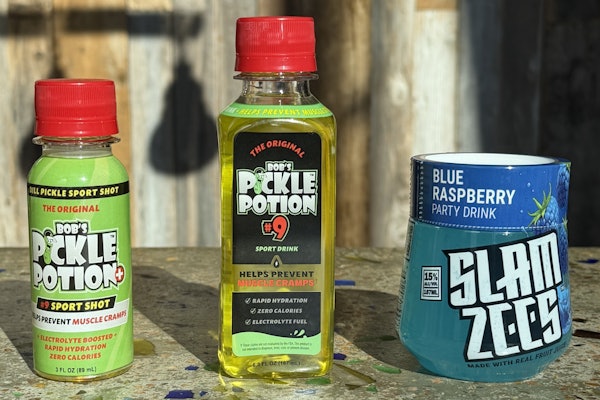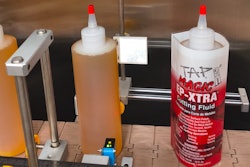It’s a messy story. The new USDA rules for labeling foods with “bioengineered” ingredients, which became fully effective January 1, 2022, are being challenged in court. Opponents, including the Center for Food Safety, an advocacy group, are plaintiffs in federal court in San Francisco, suing USDA to stop the effectiveness of the new rules.
If the court agrees that any of the plaintiffs’ objections are valid, the court will temporarily, or permanently, prohibit the rules from going into effect or being enforced.
Let’s take a close look at some of the issues raised in the lawsuit, some of which are commonly raised in administrative cases. For background, you can see my July 2018 column in PW for a summary of the rules and even some of the controversy.
The USDA itself refers to its rules, which it calls the National Bioengineered Food Disclosure Standard, as intended to require disclosure of information about bioengineered foods and ingredients. (Separately, USDA offers guidance for those who want to claim their foods contain no bioengineered ingredients.)
The new requirements apply to foods that are required to be labeled under FDA’s requirements and to meat and poultry products required to be labeled under USDA’s. Yo, packaging makers and users: packaging components that migrate into food are not “food” for purposes of these new bioengineered food disclosure requirements. And, for what it’s worth, neither are animal foods.
“The Standard defines bioengineered foods as those that contain detectable genetic material that has been modified through certain lab techniques and cannot be created through conventional breeding or found in nature,” explains a USDA document.
USDA’s Agriculture Marketing Service generated a list of bioengineered foods to help companies comply. “The List of Bioengineered Foods is alfalfa, apple (Arctic™ varieties), canola, corn, cotton, eggplant (BARI Bt Begun varieties), papaya (ringspot virus-resistant varieties), pineapple (pink flesh), potato, salmon (AquAdvantage®), soybean, squash (summer), and sugarbeet. These foods comprise most of the bioengineered crops or foods grown in the world and, therefore, most of the bioengineered food and food ingredients.” USDA will conduct annual reviews of the list.
“If a food or food ingredient is on the List of Bioengineered Foods, and the regulated entity’s records show that the food is a bioengineered food or does not indicate whether or not the food is bioengineered, the food must bear a … disclosure,” says USDA.
Perhaps the most controversial element of the program is that food makers, importers, and some retailers have their choice of means of making the disclosure. They can put text or a symbol on the food’s label, or use an electronic or digital link, or a text message. Small food makers, or small packages, can disclose via a phone number or web address.
Another controversial element of the new program is the use of the phrase “bioengineered” instead of “GMO” or genetically engineered. USDA says bioengineered is the more accurate term, but consumer advocates say it’s misleading, particularly since the public is more familiar with the other terms.
The plaintiffs say the new rules violate the law Congress passed telling USDA to make the rules, and also violates something called the Administrative Procedure Act as well as the U.S. Constitution.
That Administrative Procedure Act is extraordinarily important to our government’s operation and protection of our due process rights. It comes into play because Congress makes laws and often those laws tell administrative agencies to do one thing or another on one or another topic. For example, the law might tell an agency, “Make rules that make machinery safer for workers,” but if the agency then makes rules that are too different than the instructions Congress gave it, the rules can be invalidated.
One of its key provisions says that no agency action can be “arbitrary, capricious or … otherwise not in accordance with law,” and that’s what the plaintiffs say is true here.
They argued in a recent filing that USDA’s regulations “fall far short of fulfilling the promise of meaningful GE [genetically engineered] food labeling. Instead, … [it] excludes most GE foods from mandatory disclosure, limits the applicable labeling terminology to the obscure “bioengineered,” and allows disclosure in a form never before approved in a federal label—electronic Quick Response (QR) codes—that the Agency itself determined would conceal disclosures from many Americans. If that were not enough, … [it] forbids retailers from doing better than the feeble standard USDA set, restricting their constitutional rights to speak clearly and plainly to their own customers about GE foods using familiar means and terms.”
Are the plaintiffs right? Well, we’ll see. The plaintiffs’ motion asking for a ruling in their favor will be heard in March. Meanwhile, you can probably find some disclosure labels anyway, as some companies started already using them.
So they’re here, sort of, but stay tuned.
Eric Greenberg can be reached at [email protected]. Or visit his firm’s Web site at www.ericfgreenbergpc.com.
INFORMATIONAL ONLY, NOT LEGAL ADVICE.


























